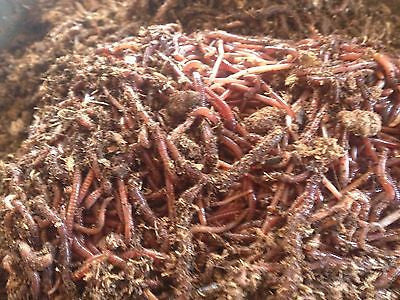Using Red Wigglers for Reliable Organic Garbage Disposal
These worms not just enhance waste decay however likewise generate important worm spreadings, which can dramatically boost dirt health. Understanding the subtleties of setting up a successful worm bin and preserving an ideal environment is vital for maximizing their advantages.
Benefits of Making Use Of Red Wigglers
One of one of the most compelling advantages of utilizing red wigglers for natural garbage disposal is their impressive effectiveness in composting. These worms, clinically referred to as Eisenia fetida, are specifically adapted for breaking down natural materials, allowing them to process waste approximately two times their body weight every day. This fast decomposition not only speeds up the composting process however additionally generates nutrient-rich worm spreadings that considerably boost dirt high quality.
Furthermore, red wigglers add to a decrease in land fill waste. By diverting natural products from land fills, they aid lessen methane emissions-- a powerful greenhouse gas. This eco-friendly advantage is critical in the battle against climate modification.
In addition, red wigglers are low-maintenance and can flourish in different settings, making them accessible for both amateur and skilled composters. Their ability to recreate quickly guarantees a stable populace, helping with continuous waste processing.
Setting Up Your Worm Bin
Producing an efficient worm bin is vital for making best use of the advantages of composting with red wigglers. The primary step is choosing a proper container. A container constructed from plastic or timber, with a capability of 10 to 20 gallons, is excellent. Guarantee the bin has adequate drainage openings to avoid excess wetness, as red wigglers thrive in a wet but not soaked setting.
(Worm Farms Near Me)Following, prepare the bedding material, which serves as the worms' habitat and food source. The bin must be placed in a dark, temperature-controlled area, preferably between 55 ° F and 77 ° F, to maintain worm task.
As soon as the container is set up, introduce the red wigglers, enabling them to acclimate to their new atmosphere. A properly maintained container will certainly not just support the health of the worms yet likewise assist in reliable decomposition of organic waste.
(red wiggler composting worms)
What to Feed Red Wigglers
An understanding of the suitable diet plan for red wigglers is crucial for keeping a healthy worm population and optimizing composting performance. These items not only give crucial nutrients however likewise contribute to the moisture equilibrium within the worm bin.
It is critical to prevent specific foods that can damage the worm populace. Red wigglers must not be fed meat, dairy products, oily foods, or processed items, as these can attract insects and develop unpleasant odors. red wigglers. Additionally, citrus fruits and zesty foods should be decreased, as their acidity can be detrimental to worms
To promote ideal digestion, food must be sliced right into smaller pieces, assisting in quicker failure and intake. Presenting food in moderation is also essential; overfeeding can lead to anaerobic problems and attract undesirable pests. Monitoring the worm bin for food usage rates will certainly help make certain that red wigglers are obtaining an appropriate diet regimen while maintaining an efficient composting atmosphere. Proper feeding methods are vital for fostering a thriving community within the worm container.
Maintaining Your Worm Environment
A well-maintained worm habitat is essential for the health and wellness and performance of red wigglers. To ensure optimum problems, it is vital to monitor temperature, wetness, and oygenation within the worm container. Red wigglers flourish in a temperature variety of 55 to 77 levels Fahrenheit. Surpassing this array can worry the worms, so it is essential to put the bin in an appropriate location away from direct sunlight and extreme temperatures.
An excellent policy of thumb is to keep wetness at around 70% to 80%. If the bed linens becomes also damp, it can lead to anaerobic problems that are harmful to the worms.

Utilizing Worm Spreadings in Horticulture
Rich in nutrients and advantageous microbes, worm spreadings function as an outstanding organic plant food for horticulture. Produced through the digestion processes of red wigglers, these castings have an array of crucial nutrients, including discover this nitrogen, phosphorus, and potassium, which advertise durable plant growth. Unlike synthetic fertilizers, worm spreadings provide a slow-release system, ensuring that nutrients are available to plants over a prolonged duration, therefore minimizing the danger of nutrient leaching and dirt depletion.
In enhancement to nutrient content, worm castings improve soil structure and aeration, boosting moisture retention and drainage. The microbial life existing in worm spreadings helps to subdue pathogens and promotes a healthy dirt environment, more profiting plant wellness. When integrated into the soil or utilized as a leading clothing, worm castings can substantially boost seed germination prices, root development, and total plant vitality.
For optimal outcomes, gardeners must apply worm castings at a price of 1-2 inches per square foot, mixing them right into the dirt or incorporating them into potting mixes. On the whole, making use of worm spreadings is an eco-friendly method to improving dirt fertility and making sure flourishing garden environments.
Conclusion
